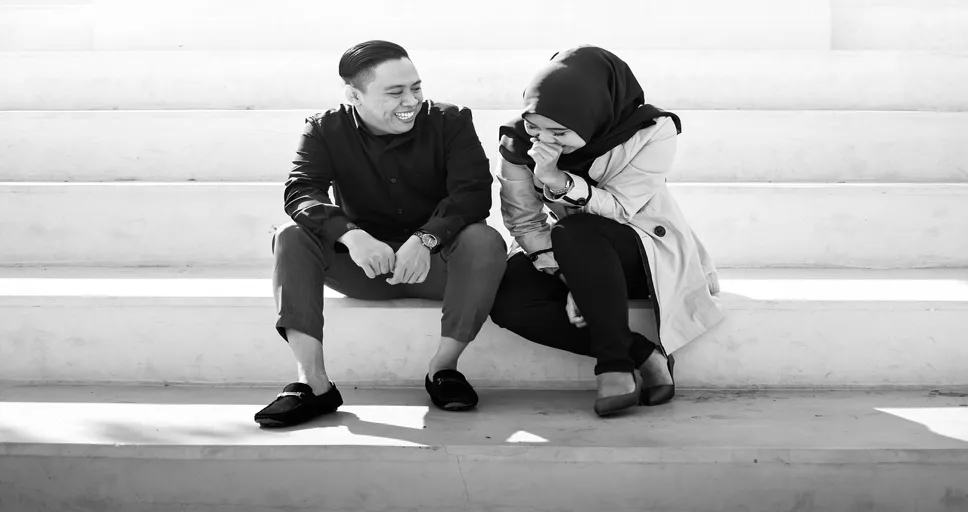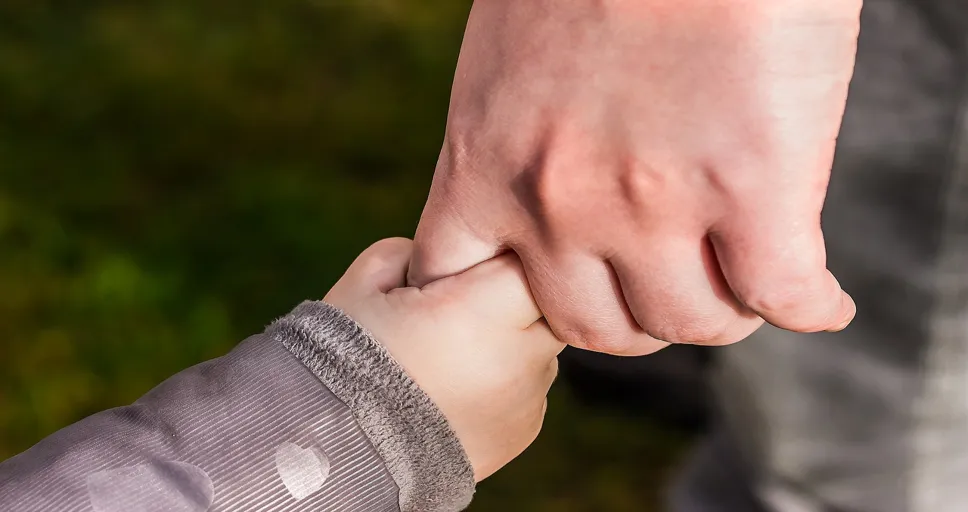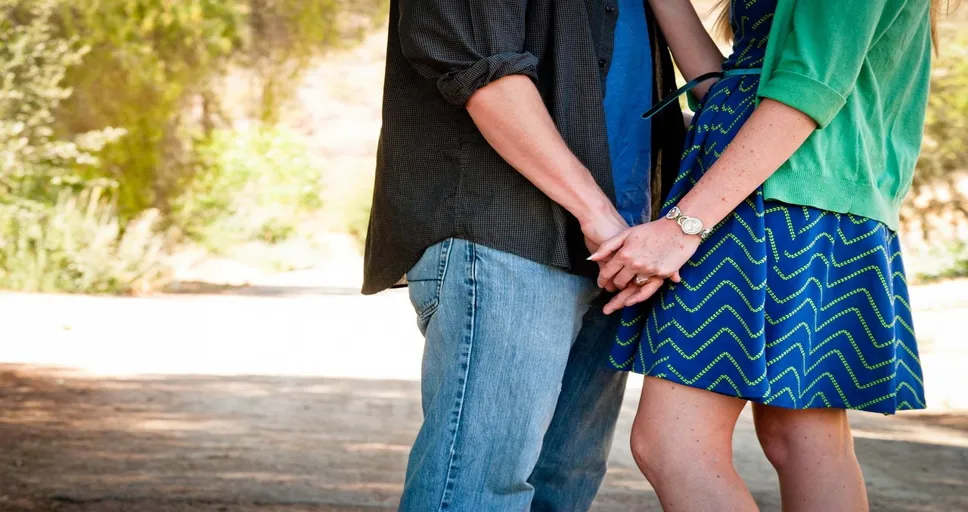Contents
- 1 Decoding the Blank Stare: What it Means When He Stares at Me with a Blank Face
- 2 Psychological Factors Behind a Blank Expression
- 3 Cultural Implications of the Blank Stare
- 4 How to Respond to Someone’s Blank Expression
- 5 The Role of Non-Verbal Communication
- 5.1 1. The Power of Eye Contact
- 5.2 2. Facial Expressions: More Than Meets the Eye
- 5.3 3. Posture and Gestures: Speaking Without Words
- 5.4 4. Proximity and Personal Space
- 5.5 5. Tonal Variations
- 5.6 6. The Context Matters
- 5.7 7. Cultural Influences on Non-Verbal Communication
- 5.8 8. Active Listening Beyond Words
- 5.9 Conclusion
- 6 Potential Misinterpretations and How to Avoid Them
- 7 Building Better Connection Through Empathy
- 8 Frequently Asked Questions
- 8.1 What does it mean when a guy stares at you but doesn’t look away?
- 8.2 Why does he look at me secretly?
- 8.3 What does a blank stare indicate?
- 8.4 What if a guy stares at you without smiling?
- 8.5 What does it mean when a guy holds his stare at you?
- 8.6 What does it mean if a guy stares at you with a blank face?
- 8.7 Why does he keep staring at me even when I catch him?
- 8.8 Why would someone give you a blank stare?
- 8.9 Why would someone have a blank stare?
- 8.10 What if a guy stares at you but never talks to you?
- 9 Final Thoughts
- 10 Recommended Authors For Further Reading
Every time he stares at me with a blank face, I find myself puzzled and questioning what’s going on in his mind. Is it indifference, confusion, or something deeper? While it may be tempting to jump to conclusions or dismiss the behavior as merely odd, it’s crucial to recognize the multitude of factors that can contribute to such non-verbal expressions. This article aims to delve into the nuances behind the blank stare, from psychological factors to cultural implications. By understanding these elements, you can foster more meaningful interactions and respond empathetically when faced with a vacant gaze. As we unpack the intricacies of this behavior, we’ll explore ways to bridge the communication gap, ensuring more genuine connections.
- Decoding the Blank Stare:
- Can signify emotional detachment or deep immersion in thought.
- Sometimes a result of processing new information.
- Used as a protective mechanism to hide emotions.
- Might indicate discomfort, anxiety, or fatigue.
- Blank expressions can stem from various psychological factors: cognitive processing, dissociation, anxiety, defensive tactics, medical conditions, emotional exhaustion, or deep reflection.
- Approach blank stares with empathy and seek other contextual cues for better understanding and communication.
Decoding the Blank Stare: What it Means When He Stares at Me with a Blank Face
Every now and then, you might catch someone’s gaze and notice there’s no discernible emotion. When he stares at me with a blank face, a whirlwind of questions come to mind. What is he thinking? Does he understand what I’m saying? Is there something he wants to convey? These are valid concerns, and in this section, we aim to shed light on this perplexing behavior.
Emotional Detachment or Deep Thought?
One of the primary reasons for a blank expression could be emotional detachment. When someone is not emotionally invested in the conversation or environment, they may display a passive or neutral facial expression. However, this doesn’t always denote disinterest. On the contrary, a person might be so engrossed in thought that they’re momentarily disconnected from their surroundings, resulting in a blank stare.
Processing Information
Another reason why he might look at you with an expressionless face is that he’s processing information. This is especially true if you’ve shared something profound or unexpected. The mind often requires a moment to assimilate new data before formulating a response.
The Protective Mechanism
For some, presenting a blank face is a protective mechanism. It serves as a shield to conceal true feelings, especially in situations where they might feel vulnerable or exposed. By maintaining a neutral expression, they believe they’re hiding their emotions, thereby preventing potential judgment or scrutiny.
A Sign of Discomfort
While it’s easy to assume that when he stares at me with a blank face, it’s due to disinterest or boredom, sometimes, it’s quite the opposite. The blank stare could be a sign of discomfort or anxiety. In unfamiliar or tense situations, people might struggle to express themselves openly, leading to an impassive facade.
Fatigue or Overwhelm
We live in a fast-paced world where everyone is juggling multiple responsibilities. At times, sheer exhaustion or feeling overwhelmed can cause a person to space out, resulting in a blank expression. It’s their mind’s way of taking a brief respite.
Conclusion
While a blank stare can be disconcerting, it’s essential to remember that it can stem from a myriad of reasons. The key is not to jump to conclusions based solely on a fleeting expression. Instead, pay attention to other cues and the context of the situation. By doing so, you’ll be better equipped to understand the underlying emotions and intentions, fostering more effective communication and connection.
Psychological Factors Behind a Blank Expression
When someone’s gaze feels devoid of emotion, it often leaves us wondering. If he stares at me with a blank face, what might be going on in his mind? The answer often lies in the intricate world of psychology. Different mental processes and emotional states can lead to such expressions. Here, we dive into some of the primary psychological reasons behind a blank stare.
Cognitive Processing
Sometimes, a blank expression is a sign that the brain is hard at work. When faced with a complex problem or trying to understand intricate details, an individual might momentarily disconnect from their surroundings. This cognitive immersion can make one appear distant or vacant.
Dissociation
Dissociation is a psychological phenomenon where an individual feels detached from their surroundings, thoughts, or even themselves. It’s like being on autopilot. In these moments, he stares at me with a blank face not out of indifference but because he’s experiencing a temporary disconnection from the present moment.
Anxiety and Overwhelm
Anxiety has a myriad of manifestations, one of which can be a blank stare. When someone is anxious, their brain might go into overdrive, thinking of potential outcomes or ruminating on past events. This mental flurry can result in a momentarily blank or distant expression.
Defensive Mechanism
Some people use a blank expression as a shield, especially when they anticipate criticism or confrontation. By showing no emotion, they believe they can avoid revealing their true feelings or vulnerabilities.
Medical Conditions
While not always the case, certain medical conditions, such as absence seizures or specific forms of autism, can lead to blank expressions. It’s essential to approach this possibility with sensitivity and avoid making assumptions without proper knowledge.
Emotional Exhaustion
Chronic stress or prolonged periods of emotional turbulence can drain an individual’s emotional reservoir. When one feels emotionally spent, they might struggle to show enthusiasm or interest, leading to a blank face.
Mindfulness or Deep Reflection
On a more positive note, a blank expression can also be a sign of mindfulness or deep reflection. In moments of profound thought or meditation, an individual might appear blank to the outside world, even though their inner world is rich with contemplation.
Conclusion
While the initial reaction to someone’s blank stare might be one of confusion or concern, understanding the myriad psychological factors at play provides a more compassionate perspective. When he stares at me with a blank face, it could be due to any of these reasons or a combination of them. The key is to approach such situations with empathy, understanding, and a willingness to communicate, ensuring a deeper connection and mutual understanding.
Cultural Implications of the Blank Stare

Culture significantly influences how we express and interpret emotions. A gesture or facial expression common and acceptable in one culture might be misconstrued in another. When he stares at me with a blank face, could his cultural background be playing a role in this expression? Here, we explore the cultural nuances behind the blank stare and its varied interpretations across the globe.
Eastern Reserve vs. Western Expression
In many Eastern cultures, subtlety and restraint in emotional expression are valued. A blank face might signify attentiveness, respect, or deep contemplation. Contrarily, in several Western societies, animated facial expressions and overt emotional displays are more common. Thus, a blank stare might be misinterpreted as disinterest or aloofness when, in reality, it’s a sign of respectful listening.
The Role of Hierarchies
In cultures with a strong hierarchical structure, showing overt emotions in the presence of a senior or superior can be deemed inappropriate. In such situations, a blank stare can be a way of maintaining one’s composure and showing deference. It’s not that he’s indifferent when he stares at me with a blank face; it might be a sign of cultural respect.
Gender Expectations
Different cultures have varied expectations of how genders should express emotions. In some societies, men are encouraged to maintain a stoic demeanor, refraining from showing too much emotion. A blank stare from a man might be in line with these cultural norms, rather than an indication of his personal feelings.
Public vs. Private Spaces
Cultural norms around emotional expression often differ based on public and private settings. In some cultures, displaying emotions in public spaces is discouraged, leading individuals to adopt a more neutral facial expression. Understanding this can provide context if he stares at me with a blank face in a public setting.
The Influence of Language
Language plays a pivotal role in how emotions are processed and expressed. In cultures where the language is nuanced and layered, a blank stare might indicate someone is searching for the right word or phrase, ensuring their response is apt and respectful.
Respecting Silence
Silence is golden, or so the saying goes. In certain cultures, silence is not an indicator of disinterest but of reflection and respect. Pausing before responding, accompanied by a neutral face, is seen as giving due consideration to what has been said.
Conclusion
The cultural backdrop against which an individual is raised and socialized has a profound impact on their non-verbal communication. When he stares at me with a blank face, it’s crucial to consider these cultural implications before drawing conclusions. By being culturally aware, we can foster better understanding and avoid misinterpretations, leading to more enriching and empathetic interactions.
How to Respond to Someone’s Blank Expression
Encountering a blank stare can be both unsettling and confusing. When he stares at me with a blank face, my initial impulse might be to interpret it negatively or become self-conscious. However, it’s essential to recognize that such a facial expression can arise from a myriad of reasons. How then, should one respond? Here are some practical steps to navigate such situations effectively.
1. Stay Calm and Non-Judgmental
Avoid jumping to conclusions or taking it personally. A blank expression is not necessarily a reflection of disinterest or negativity. Keeping a calm demeanor will help you approach the situation with an open mind.
2. Check-In with a Gentle Question
A simple, “Is everything okay?” or “Did I say something unclear?” can open up the communication lines. It gives the person an opportunity to share if something is on their mind or if they’re processing what was said.
3. Pay Attention to Other Non-Verbal Cues
While he stares at me with a blank face, it’s beneficial to observe other body language signs. For instance, are his arms crossed, or is he leaning forward? These cues can provide additional insights into his state of mind.
4. Ensure Clear Communication
If you’re in the midst of a conversation, make sure you’re communicating your points clearly. If someone’s blank expression stems from confusion, rephrasing or providing more context can help.
5. Offer a Change of Topic
If you feel the conversation might be causing discomfort, consider switching to a lighter or different topic. This can ease the atmosphere and potentially alleviate the blank expression.
6. Give Them Space
If someone appears lost in thought or distant, it might be best to give them a moment. They could be processing information, reflecting on something personal, or even experiencing a momentary mental distraction.
7. Address it Later
If the blank expression persists and affects your relationship with the individual, consider addressing it privately at a later time. A candid conversation can help clear any misunderstandings.
8. Reflect on Your Own Behavior
It’s always helpful to introspect. Are there patterns in your communication that might be leading to such reactions? Self-awareness can be a powerful tool in improving interactions.
9. Educate Yourself
If you suspect cultural or psychological reasons behind the blank stare, take the time to educate yourself. Understanding the nuances of different cultures or the intricacies of mental health can equip you to respond more empathetically.
Conclusion
Reacting to a blank expression requires a balance of sensitivity, understanding, and effective communication. When he stares at me with a blank face, it’s a reminder to be patient and considerate, recognizing that a myriad of factors could be at play. By adopting these practical strategies, we can ensure our responses are both compassionate and constructive, paving the way for better interpersonal connections.
The Role of Non-Verbal Communication
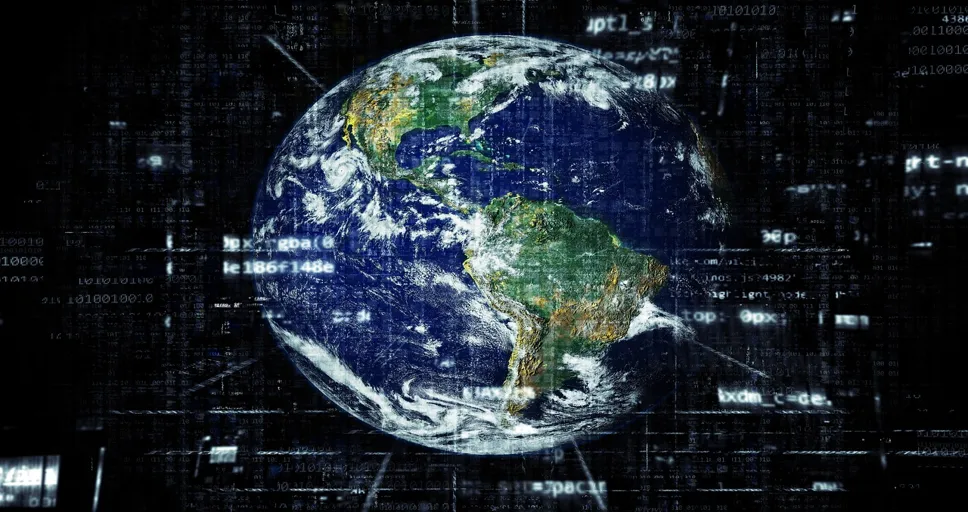
Non-verbal communication is a powerful tool that speaks volumes, often more than words themselves. It encompasses everything from our posture, gestures, and facial expressions to our tone of voice and eye contact. When he stares at me with a blank face, it becomes evident that understanding these non-verbal cues is vital for decoding the underlying message.
1. The Power of Eye Contact
Eye contact plays a critical role in how we connect with others. A steady gaze can indicate interest, while averted eyes might suggest discomfort or distraction. However, a blank stare is more nuanced. It can represent a deep contemplation, a disconnect from the conversation, or even an emotional barrier.
2. Facial Expressions: More Than Meets the Eye
While a smile or a frown is relatively straightforward to interpret, more subtle expressions like the blank stare can be perplexing. Such an expression might mean that someone is processing information, feeling overwhelmed, or trying to hide their true feelings.
3. Posture and Gestures: Speaking Without Words
How one sits, stands, or moves can provide clues about their state of mind. For example, slouched shoulders may indicate disinterest or fatigue, while animated hand gestures can show enthusiasm. When combined with a blank stare, these cues can give context to what the individual might be experiencing internally.
4. Proximity and Personal Space
The distance between individuals during a conversation can say a lot about their relationship and comfort levels. If someone maintains distance and has a blank expression, it might signal a sense of detachment or unease.
5. Tonal Variations
While the focus is often on what is said, how it’s expressed is equally crucial. A monotone voice, combined with a blank stare, could suggest disengagement or boredom. On the other hand, fluctuations in tone can provide insights into one’s emotional state, even if their face remains expressionless.
6. The Context Matters
It’s essential to consider the setting and the ongoing conversation when interpreting non-verbal cues. For instance, if he stares at me with a blank face during a deep or sensitive discussion, it might be a sign of introspection rather than indifference.
7. Cultural Influences on Non-Verbal Communication
Different cultures have varied norms and interpretations of non-verbal cues. What may be seen as a sign of disrespect or aloofness in one culture might be entirely standard in another. Thus, when encountering a blank stare, it’s vital to consider any cultural nuances.
8. Active Listening Beyond Words
To truly understand someone, it’s imperative to practice active listening. This involves not just hearing the spoken words but also tuning into the non-verbal signals. Recognizing the importance of these cues can aid in more profound, empathetic conversations.
Conclusion
Non-verbal communication offers a rich tapestry of insights into human behavior and emotions. When he stares at me with a blank face, it serves as a reminder of the layers of communication beyond just words. By paying close attention to these non-verbal cues and understanding their significance, we can foster deeper, more meaningful connections with others.
Potential Misinterpretations and How to Avoid Them
The subtle art of reading facial expressions and non-verbal cues can be fraught with challenges. Misinterpretations can lead to misunderstandings, which might strain relationships or cause unnecessary distress. When considering situations where he stares at me with a blank face, it’s essential to recognize potential misinterpretations and be equipped with strategies to avoid them.
1. Blank Stare as Indifference
One common misconception is associating a blank face with indifference or disinterest. While this could be true in some scenarios, a blank stare can also signify deep thought, absorption in one’s own thoughts, or an attempt to process information.
2. Overthinking the Stare
Another pitfall is reading too much into the stare. If he stares at me with a blank face, it doesn’t necessarily mean there’s a hidden agenda or underlying problem. It’s possible he’s merely daydreaming or momentarily distracted.
3. Mistaking it for Discomfort or Disapproval
A neutral expression can sometimes be mistaken for discomfort or even disapproval, especially in sensitive conversations. However, it could just be a person’s way of maintaining neutrality or trying to comprehend the topic at hand.
4. Cultural Misinterpretations
As previously mentioned, cultural nuances play a significant role in non-verbal communication. In some cultures, maintaining a neutral face is a sign of respect and attentiveness, while in others, it might indicate detachment.
How to Avoid Misinterpretations:
Open Communication
If you’re unsure about what the blank stare signifies, the best approach is open communication. A simple check-in, like “Are you okay?” or “Do you need a moment?”, can provide clarity.
Consider the Context
Always take into account the setting and context of the conversation. If you’re discussing a complex topic and he stares at me with a blank face, it’s possible he’s merely processing the information.
Observe Other Non-Verbal Cues
Instead of focusing solely on the facial expression, observe other body language signs. These can offer a more comprehensive picture of the individual’s emotional state.
Avoid Jumping to Conclusions
Assumptions can be the root of misunderstandings. Give the benefit of the doubt and avoid drawing hasty conclusions based solely on a blank stare.
Cultivate Cultural Sensitivity
Being aware of and respecting different cultural norms regarding non-verbal communication can prevent many misinterpretations. If you’re interacting with someone from a different cultural background, take some time to understand their non-verbal communication cues.
Conclusion
While a blank stare can be perplexing, it’s essential to approach it with an open mind. Recognizing potential pitfalls and being proactive in avoiding them can pave the way for clearer communication and deeper understanding. Remember, when he stares at me with a blank face, it’s an invitation to engage, inquire, and connect on a more profound level.
Building Better Connection Through Empathy
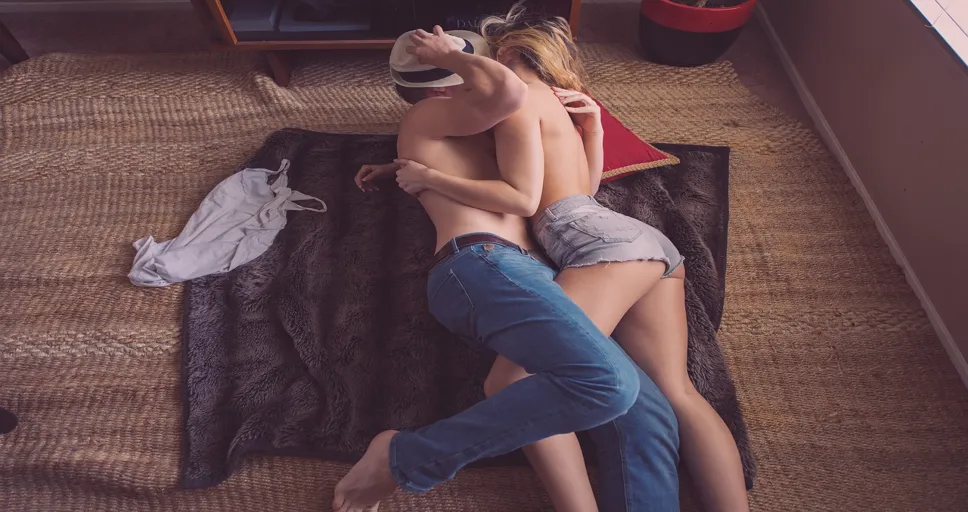
Empathy, often referred to as the ability to understand and share the feelings of another, is a powerful tool for building deep, genuine connections. When faced with situations where he stares at me with a blank face, utilizing empathy can be a game-changer in understanding and responding to the situation.
1. Active Listening
If he stares at me with a blank face during a conversation, it could be a sign that he’s processing what’s being discussed, or perhaps something is weighing on his mind. Instead of immediately reacting or making assumptions, active listening can be beneficial. This involves fully concentrating, understanding, and responding to what the other person is saying, without interruption. Sometimes, the act of being genuinely heard can lead to breakthrough moments in a conversation.
2. Putting Yourself in Their Shoes
Empathy involves imagining what the other person might be feeling or going through. If he’s consistently maintaining a blank face during interactions, considering what might be happening in his life or his day can offer insights. Perhaps he’s dealing with stress, fatigue, or personal challenges that are causing him to be more reserved.
3. Open-Ended Questions
Rather than making statements or assumptions, ask open-ended questions. Something like, “Is there something on your mind?” or “Would you like to discuss what you’re feeling?” can pave the way for more open communication.
4. Body Language
While words are powerful, our body language often speaks volumes. If you’re trying to connect and understand why he stares at me with a blank face, ensure your body language is open and inviting. This might involve maintaining eye contact, nodding in agreement, or adopting a relaxed posture.
5. Being Non-Judgmental
Empathy requires suspending judgment. Remember that everyone processes emotions and experiences differently. If he’s not immediately expressive or if he maintains a blank face, it’s essential not to judge or make him feel uncomfortable. Instead, provide a safe space for him to express himself when he’s ready.
6. Offering Support
Sometimes, a simple “I’m here for you” can make a world of difference. By offering support, you’re signaling that you care about his well-being and are willing to understand and help if needed.
7. Regular Check-Ins
If you notice a recurring pattern where he stares at me with a blank face, regular check-ins can be beneficial. It could be as simple as asking, “How was your day?” or “Is there anything you’d like to talk about?”. Regular conversations can foster understanding and ensure that both parties feel heard and valued.
Conclusion
Empathy, combined with effective communication, can help in understanding the nuances behind a blank stare. It encourages a deeper connection, built on trust and understanding. In moments where he stares at me with a blank face, rather than feeling perplexed or distant, we can use empathy as a bridge to closer, more meaningful interactions.
- A blank stare can result from various reasons, not just disinterest or indifference.
- Factors include emotional detachment, deep thought, processing information, and protective mechanisms.
- It can signal discomfort, anxiety, fatigue, or feeling overwhelmed.
- Psychological reasons include cognitive processing, dissociation, defensive mechanisms, and certain medical conditions.
- Approach blank expressions with empathy and understanding, focusing on communication and context.
Frequently Asked Questions
What does it mean when a guy stares at you but doesn’t look away?
It often suggests that he’s interested or intrigued by you, though the specific reason can vary from attraction, curiosity, or even being lost in thought.
Why does he look at me secretly?
He might be curious or attracted to you but may feel shy or hesitant to show it openly.
What does a blank stare indicate?
A blank stare can indicate confusion, disinterest, deep thought, or sometimes even emotional detachment.
What if a guy stares at you without smiling?
Staring without smiling might suggest that he’s observing or thinking about something, which could be related to attraction, curiosity, or any other emotion.
What does it mean when a guy holds his stare at you?
Holding a stare generally indicates a heightened level of interest or curiosity in the person being looked at.
What does it mean if a guy stares at you with a blank face?
A blank-faced stare might mean he’s lost in thought, indifferent, or trying to process or figure out something related to you.
Why does he keep staring at me even when I catch him?
It might indicate a strong interest, curiosity, or attraction towards you, or he might simply be lost in thought and unintentionally gazing in your direction.
Why would someone give you a blank stare?
Someone might give you a blank stare if they’re confused, uninterested, surprised, or trying to process something you said or did.
Why would someone have a blank stare?
A blank stare can be a result of deep contemplation, emotional detachment, confusion, or a medical condition.
What if a guy stares at you but never talks to you?
He might be shy, unsure of how to approach you, or simply content with observing from a distance without engaging in conversation.
Final Thoughts
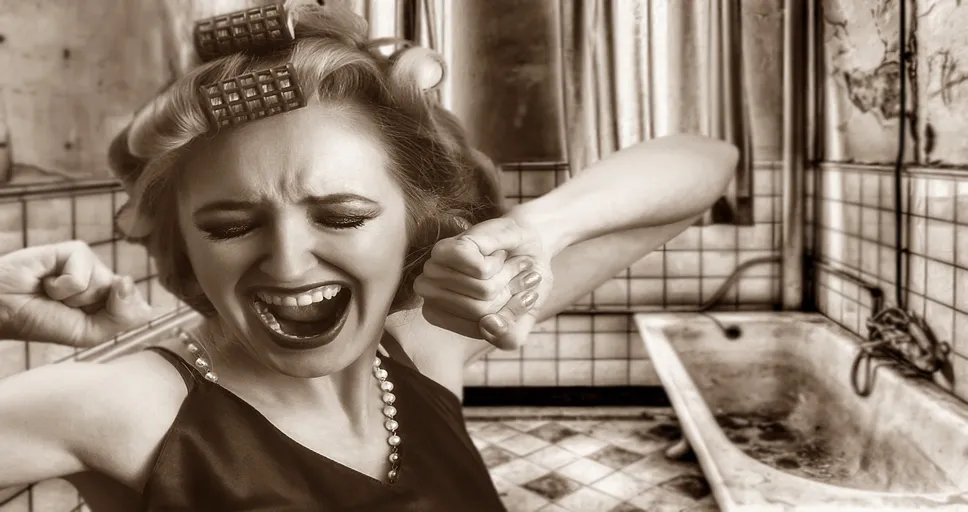
As we navigate the complexities of human interactions, the subtleties of non-verbal cues often stand out. Situations where he stares at me with a blank face might initially be perplexing, but with a deeper dive into understanding, they become opportunities for greater connection.
Humans are a tapestry of emotions, experiences, and cultural influences. A blank stare, while potentially disconcerting, is just one of many ways people express or mask their feelings. It’s essential to remember that behind such an expression, there could be a myriad of reasons, ranging from deep contemplation to cultural nuances or even psychological factors.
In our journey to understand the “why” behind such expressions, we’ve uncovered the importance of empathy, the role of non-verbal communication, and the potential misinterpretations that can arise. Every interaction offers a chance to bridge the gap of understanding. Instead of jumping to conclusions when he stares at me with a blank face, we can choose to respond with patience, kindness, and an open heart.
By doing so, we foster an environment where people feel safe to express themselves genuinely, where misunderstandings are opportunities for growth, and where every blank stare can be a doorway to a deeper connection.
In conclusion, when faced with situations where he stares at me with a blank face, it’s not just about understanding the stare, but about recognizing the value and depth of human connection. By approaching such instances with empathy, patience, and a genuine desire to understand, we can transform potentially awkward moments into meaningful engagements.
Recommended Authors For Further Reading
- Paul Ekman – A pioneer in the study of emotions and their relation to facial expressions, Ekman has written extensively about how emotions are expressed and perceived, providing insights into understanding facial cues and what they might mean.
- Deborah Tannen – Tannen’s work focuses on interpersonal communication and gender differences. Her insights can help readers understand the nuances of nonverbal communication, including why someone might maintain a blank expression.
- John Gottman – A renowned relationship expert, Gottman’s research into couples and their interactions provides profound insights into emotional responsiveness and understanding signals in relationships.
- Joe Navarro – A former FBI agent, Navarro delves into the world of nonverbal communication and body language. His expertise can shed light on the reasons behind certain facial expressions and what they indicate about an individual’s thoughts and feelings.
- Julian Jaynes – While Jaynes is best known for his theory on the bicameral mind, he provides deep insights into human consciousness, awareness, and how humans internalize and express their experiences, which could provide a broader understanding of the blank stare phenomenon.
